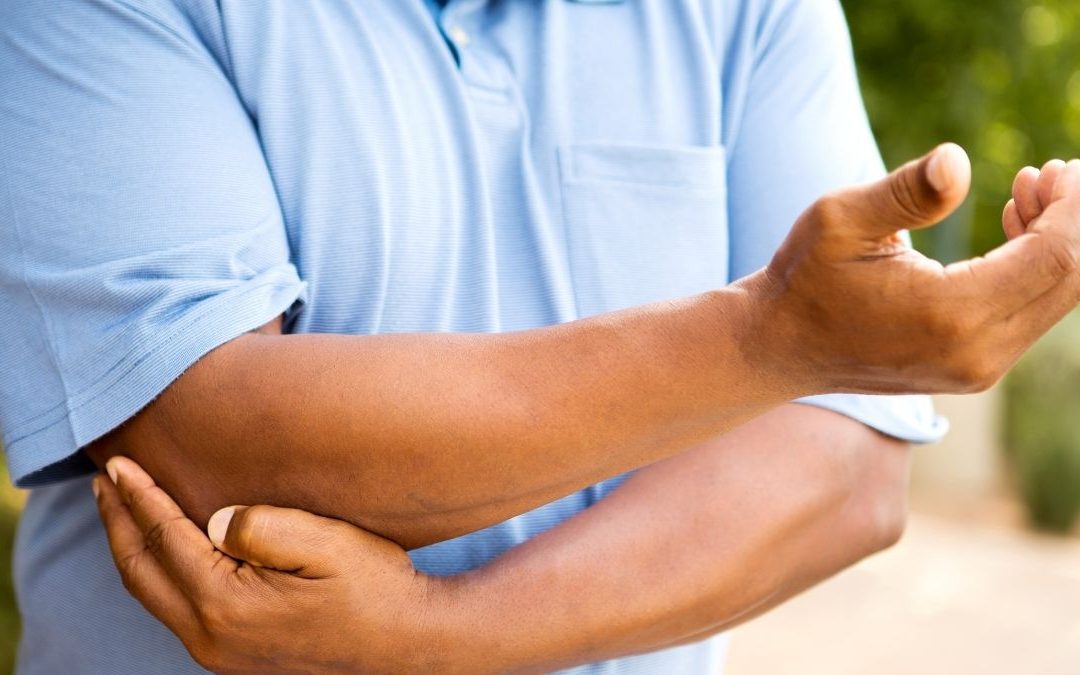Are you experiencing Pain in the inside of your elbow?
Does it hurt when you grip, squeeze, try to open jars or do manual work?
You might have what’s commonly known as Golffer’s elbow, even if you’ve never played golf before in your life!
What is Golfer’s Elbow?
Golfer’s elbow is a painful and irritable condition affecting the tendons that attach at the common flexor origin of the medial elbow. It’s medically known as medial epicondylalgia and it is also commonly referred to as an flexor tendinopathy. Golfer’s elbow is equally common in men and women and peaks in prevalence between the ages of 35 and 45.
It is, along with tennis elbow one of the most common forms of elbow pain and is usually caused by recent and rapid changes in training load, technique, duties or equipment used during domestic activities, sport or work. The severity of pain can range from trivial to almost incapacitating and can also keep a patient awake at night.
The condition involves the flexor forearm tendons that attach into the medial epicondyle of the elbow. The Flexor Carpi Radialis and Pronator Teres is the most commonly affected tendons. The flexors are prone to injury with repetitive wrist flexion, gripping, and manual tasks.
Causes
Golfer’s elbow is usually caused by overusing the muscles in the forearm, which are responsible for gripping, pronating the forearm (turning your hand down), and flexing the wrist. Repetitive flexing, gripping, or swinging can cause micro tears in the tendons which leads to tendon collagen disruption.
Despite the name, this condition doesn’t just affect golfers. Activities that can lead to golfer’s elbow include:
- Racket ball sports, like tennis, cricket and baseball. Not using the right techniques, or using a bat/racket that’s too heavy can overload the tendon.
- Sports that involve lots of throwing movements such as baseball, football, javelin throwing, and softball. Pitching a ball incorrectly can also lead to golfer’s elbow.
- Repetitive movements and overgripping of tools. This often occurs in trades such as carpentry, gardening, painting, plumbing and general laborer’s.
- Weight training in the gym. Training errors can lead to a golfers elbow—poor periodization/technique and overtraining as well.
Risk Factors
- Repetitive tasks involving wrist flexion and gripping
- Inappropriate training load, over training and poor technique
- Altered biomechanics (scapular dyskinesis, altered posture)
- Decreased strength of flexor and extensor muscle group
- Poor fitting equipment (sport or work related)
- Obesity
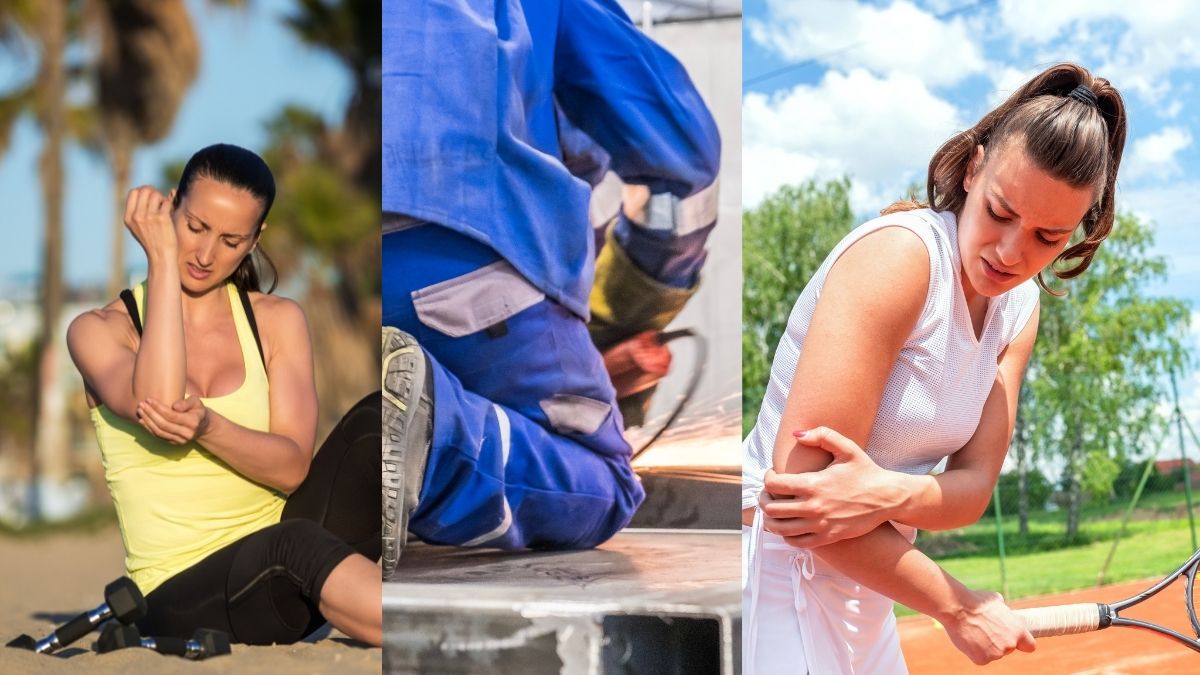
Signs and symptoms:
- Pain and tenderness: Usually felt on the inner side of the elbow but sometimes radiates down the inner side of the forearm. Pain typically worsens with wrist flexion, pronation and gripping activities.
- Stiffness:the elbow may feel stiff and there may be difficulty bending and extending the elbow fully especially with initial movement.
- Weakness: muscles around the forearm may be weakened and grip strength is usually affected due to pain inhibition.
- Numbness or tingling: The ulnar nerve can be irritated by the scar tissue and therefore cause numbness or tingling sensations over the forearm. These sensations might radiate into one or more fingers — usually the 4th and the 5th fingers.
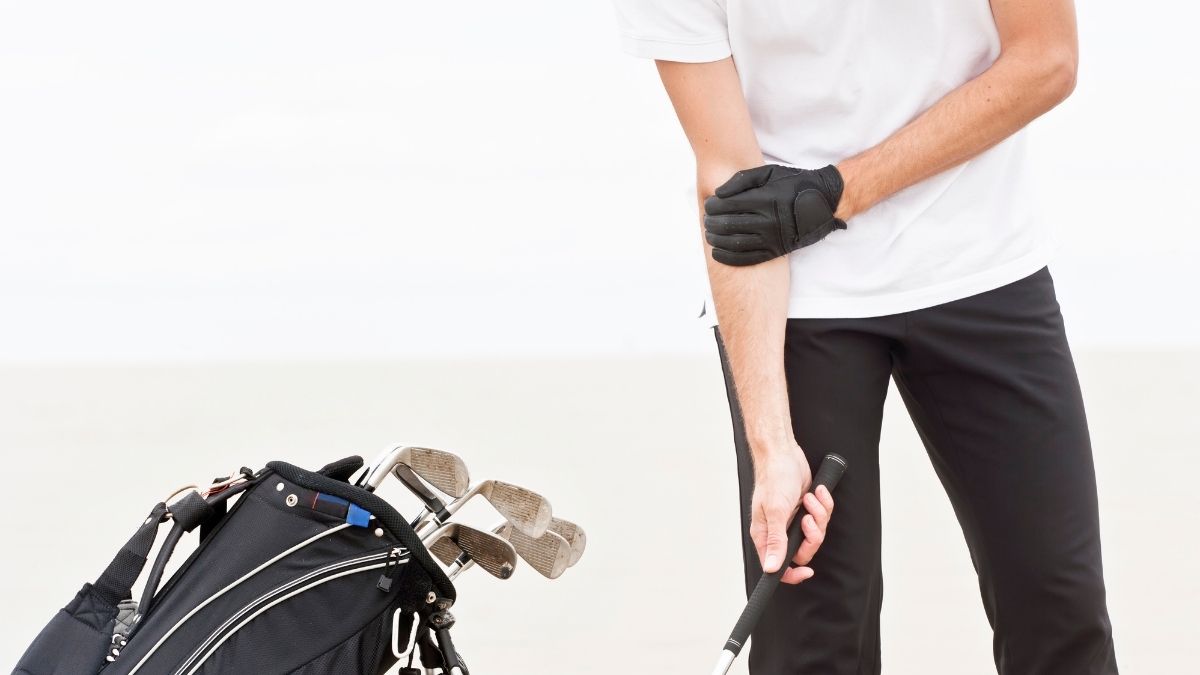
Diagnosis and examination
The diagnosis of medial epicondylalgia is based on local pain or tenderness to palpation (usually over pronator teres and flexor carpi radialis) at the elbow, and with palpation distal and anterior of the medial epicondyle. An increase in pain at the medial epicondyle with resisted isometric flexion, repetitive flexion and pronation of the wrist is typically seen on examination. On testing there is typically reduced grip strength In severe cases, the patient will complain of pain when doing simple tasks like shaking hands, opening a jar or pulling an open door.
An evaluation of the upper extremity kinetic chain is assessed. A particular focus on the neck and thoracic spine, shoulder and shoulder blade strength, movement and stability is examined. Overuse injuries in the elbow often occur with shoulder or scapular dysfunction.
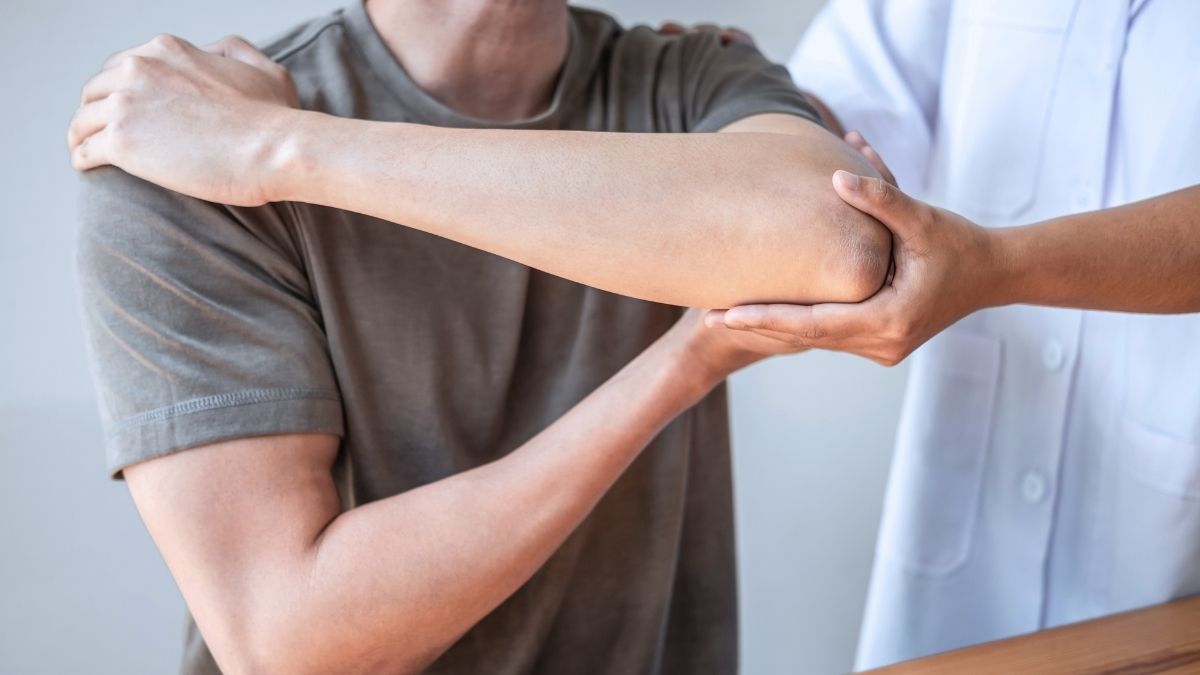
Treatment
Most cases of golfers elbow settle well with appropriate physiotherapy especially when identified and managed early. This includes careful assessment by the physiotherapist to determine which factors have contributed to the development of the condition, with subsequent correction of these factors.
Unfortunately Flexor Tendinopathies don’t get better on their own. The symptoms may feel better with rest although as soon as the aggravating activity is again commenced or load is increased the pain will generally return. Complete rest will decrease the ability of the tendon to tolerate load or activity and the surrounding muscles may atrophy and weaken, ultimately slowing down the rehab process.
The goals of initial Physiotherapy treatment are to modify load and aggravating activities, and control pain. Our Physio’s will devise an individualized and graded strengthening program for the flexors and other forearm muscles, to improve tendon capacity. Education plays a large role in this condition, with the recommendation to modify any pain provoking activity and discussing appropriate loading/unloading during rehab. Ergonomic advice should also be given where relevant, in order to reduce or modify tasks that require repetitive and forceful movements and deviated wrist postures. Addressing grip strength, coordination deficits and associated cervico-thoracic and scapular dysfunction should be targeted in treatment to enhance results (Brukner and Khan, 2017, Coomes et al. 2015). This multi-factorial approach during physio treatment helps patients achieve their goals and assists with prevention.
A graduated return to activity or sport guided by the physiotherapist is required in the final stages of treatment. This phase of treatment will also normally look at correcting the biomechanics or work postures, which resulted in the injury as part of a return to full functional activity.
With appropriate management, most minor cases of golfers’ elbow that have not been present for long can usually recover within 6-8 weeks. In more severe and chronic cases, recovery can be a lengthy process and may take up to 6 -12 months. Early physiotherapy intervention is therefore vital to hasten recovery.
Despite appropriate physiotherapy management, some patients with golfers elbow do not improve. When this occurs the best course of management may include X-rays, ultrasound or MRI investigations and referral to an Orthopedic or Sports Physician.
When developing a treatment plan we consider each patients functional tasks and the lifestyle goals that they want to achieve whether it be certain work tasks, domestic ADL’s, gardening activities, lifting weights in the gym or their sporting/recreational activities such as tennis. By understanding these goals and the movements required, we can personally tailor treatment to them.
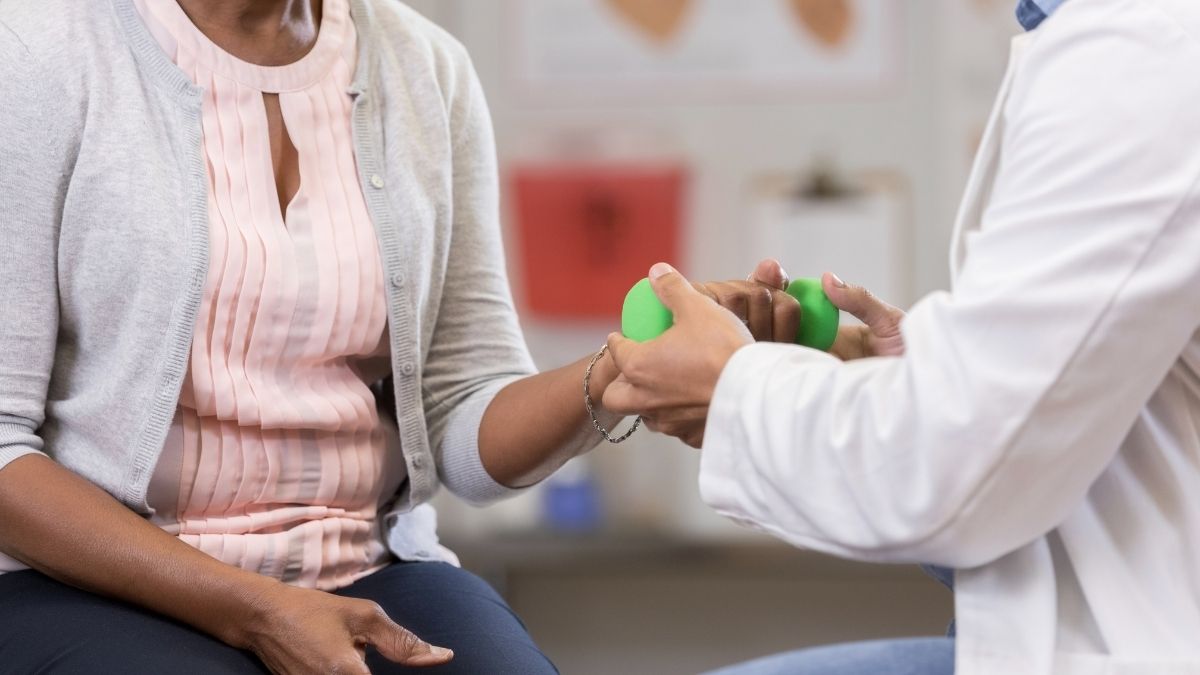
What does the evidence suggest?
Exercise for golfers elbow is supported by evidence for long term benefit and prevention of re-occurrences. General guidelines recommend a gradual increase in resistance and complexity of exercises, with no preference over concentric or eccentric programs (Brukner and Khan, 2017, Coomes et al. 2015). The inclusion of addressing the cervico-thoracic region and scapula control is important as Vicenzino et al. 2010 found that unaddressed accompanied kinetic chain factors was one of the strongest contributors to persistent medial elbow symptoms. Elbow mobilisation with movement (MWM) in combination with exercise over a 6 week period has been found to result in improved pain free grip force, fewer re-occurrences and greater patient satisfaction, compared to a wait and see approach (Vicenzino et al. 2007). In terms of bracing as a treatment technique, Erickson et al. (2015) reported that bracing is no better than physical therapy in treating golfers elbow over the long term (>26 weeks), however bracing is sometimes used as an adjust to physiotherapy. Although providing short term relief <6 weeks, corticosteroid injections are associated with higher re-occurrence rates of symptoms and significantly poorer outcomes, beyond 6 weeks when used in isolation (Bisset et al. 2006). Thus it is important that we address the underlying dysfunction causing symptoms.
Conclusion
Golfers Elbow is a common chronic upper limb problem that our team at Five Dock Physiotherapy & Sports Injury Centre treat effectively. Often patients will present with this condition after “making do”, trying to “wait and see” and tolerating symptoms for months to years. While resting the arm will reduce symptoms, it does not strengthen the tendon or address the cause, thus symptoms typically recur when returning to activity, meaning that there is minimal progress with this approach.
There is consistent evidence supporting the combined approach of manual therapy, load and activity management, and progressive tendon loading through physiotherapy prescribed exercises. Physio rehabilitation that includes a tailored and well monitored exercise program in both acute and chronic cases can help sufferers not only get relief of symptoms, but improved strength and an improvement in function. If you are troubled by golfers elbow, we suggest an appointment before the symptoms get out of hand so we can help you get some relief early on, provide advice and commence strengthening helping to get an overall better outcome in the fastest time possible.
………
Are you troubled by Elbow Pain?
Maybe it’s time to get it checked out?
GET AN ASSESSMENT & TREATMENT WITH OUR AMAZING TEAM OF PHYSIO’S.
- Get crystal clear about what are the causes of what is causing your elbow pain
- Understand how to best continue activities without suffering consequences
- Find out the simple yet essential exercises that can help you achieve the long term solution
- Leave the session with the confidence of knowing exactly what to do to get symptom free and back to living life without pain
Please contact us on:

